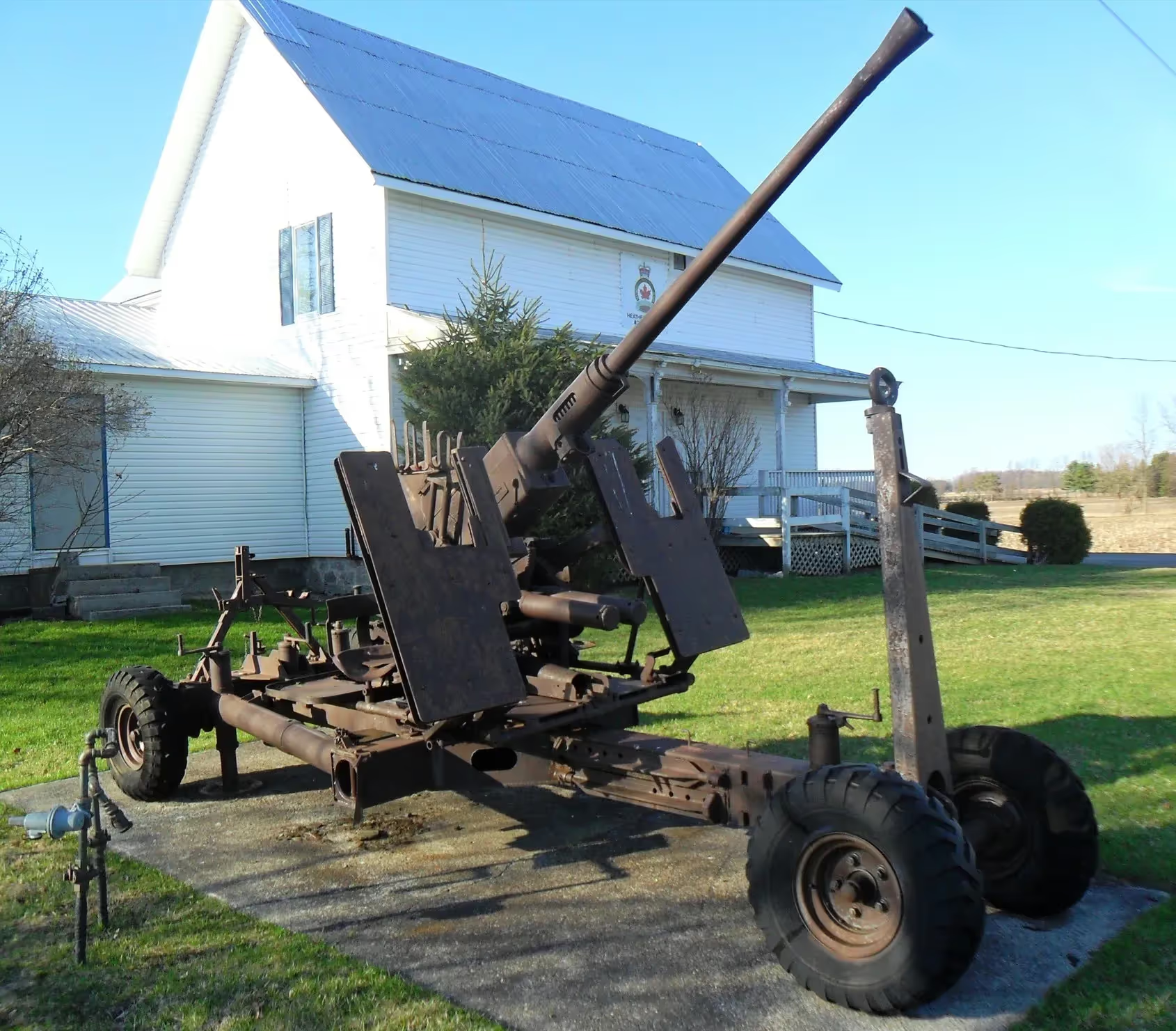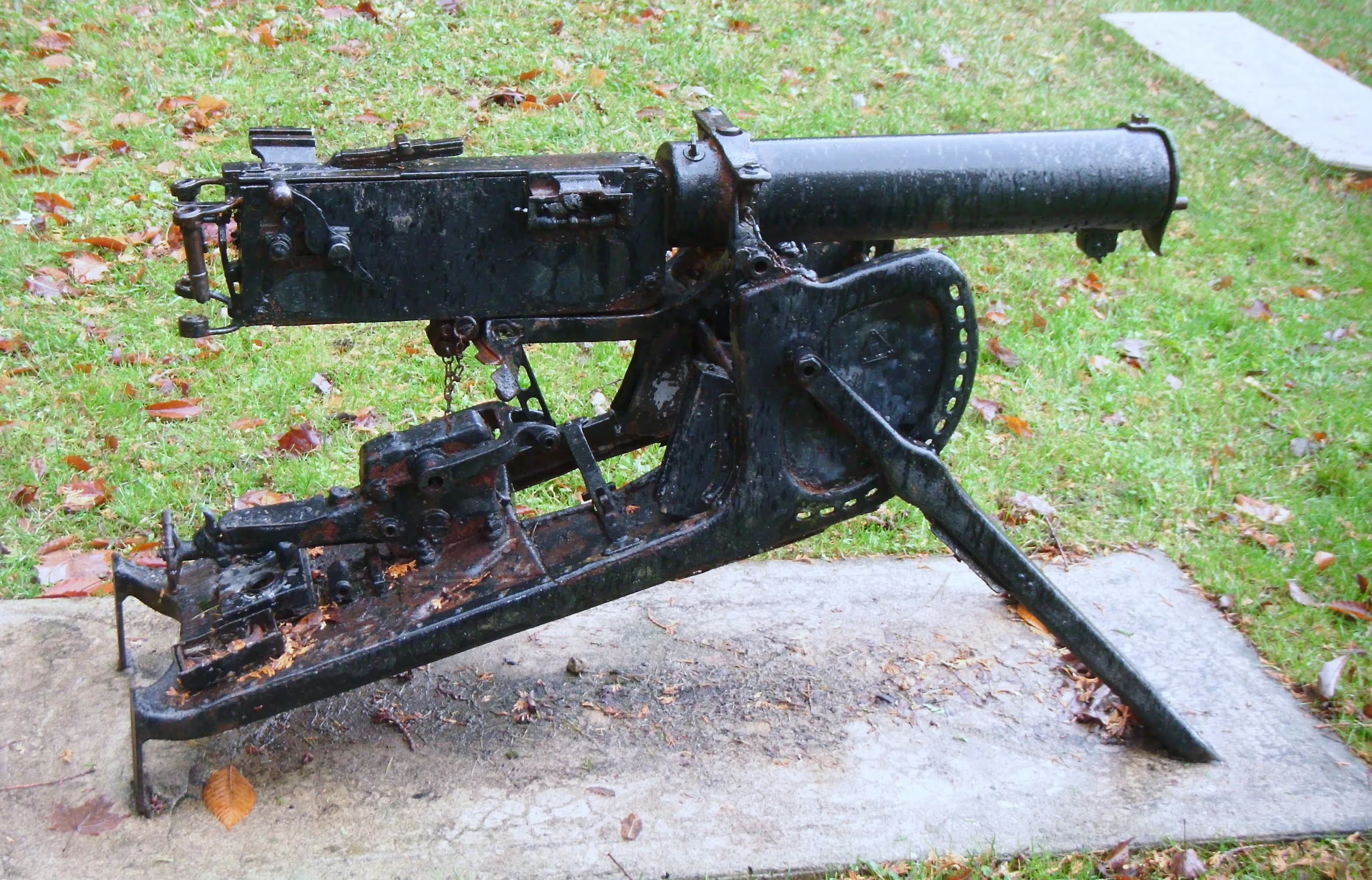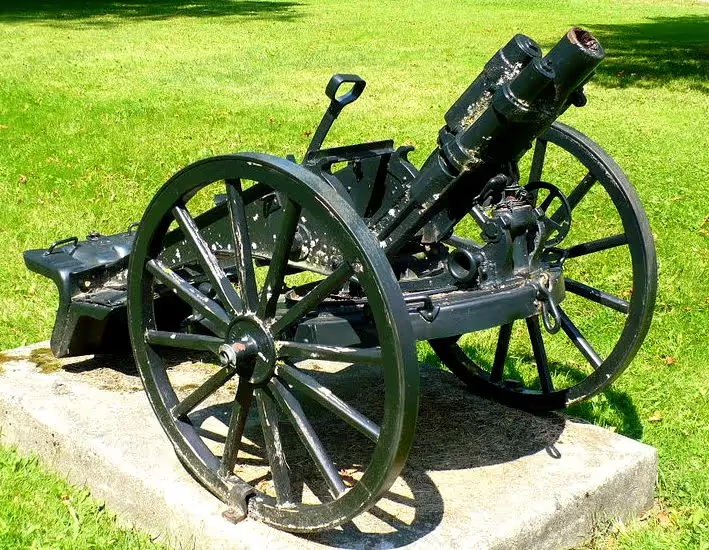Artillery in Canada (5) Ontario: Dundas, Dunnville, Durham, Eganville, Elliot Lake, Emo, Espanola, Essex, Etobicoke, Finch, Flesherton, and Fordwich
Artillery in Ontario,
Dundas, Dunnville, Durham, Eganville, Elliot Lake, Emo, Espanola, Essex, Etobicoke, Finch, Flesherton, and Fordwich
The aim of this website is to locate, identify and document every historical piece of artillery preserved in Canada. Many contributors have assisted in the hunt for these guns to provide and update the data found on these web pages. Photos are by the author unless otherwise credited. Any errors found here are by the author, and any additions, corrections or amendments to this list of Guns and Artillery in Canada would be most welcome and may be e-mailed to the author at [email protected].
For all official data concerning the Royal Regiment of Canadian Artillery, please click on the link to their website:
Royal Regiment of Canadian Artillery Website
According to the 1974 edition of ACP 125 Cansupp 1A, "Sheldrake" was the appointment title for the artillery representative in a headquarters. "GOLF" was the arms indicator to be used by artillery callsigns on nets other than their own, especially those of the supported arms.
Dundas, Hamilton
Blomefield SBML 12-pounder Gun, weight 34-0-14 (3,822 lbs), (Serial No. 70) on right trunnion, C, King George III cypher, broad arrow mark, mounted on a concrete stand in front of the Dundas Town Hall.

(nhl4hamilton Photo)
25-pounder C Mk. 2 QF Field Gun with No. 9 circular firing platform, Tac Signs for the Hamilton-Wentworth 11th Field Battery, RCA. King Street West.
Dunnville

.avif)
(JustSomePics Photos)
Cast Iron 24-pounder 20-cwt Smoothbore Muzzleloading Gun, weight 20-3-0 (2,324 lbs), 1847, mounted on a stone and concrete stand, No. 1 of 2, located in Central Park with one on the North side of the park at the intersection of Cedar Street and Broad Street West.
Cast Iron Smoothbore Muzzleloading Gun, No. 2 of 2, located on the South side of Cedar Street and Lock Street West.
Durham



(JustSomePics Photos)
German First World War 17-cm mittlerer Minenwerfer (17-cm mMW), (Serial Nr. 1682), mounted on iron wheels, captured by the 13th Battalion. City Park.
The 17 cm mittlerer Minenwerfer (17 cm mMW). This mortar was useful in destroying bunkers and field fortifications otherwise immune to normal artillery. It was a muzzle-loading, rifled mortar that had a standard hydro-spring recoil system. It fired 50 kilogram (110 lb) HE shells, which contained far more explosive filler than ordinary artillery shells of the same calibre. The low muzzle velocity allowed for thinner shell walls, hence more space for filler. Furthermore, the low velocity allowed for the use of explosives like Ammonium Nitrate-Carbon that were less shock-resistant than TNT, which was in short supply. This caused a large number of premature detonations that made crewing the minenwerfer riskier than normal artillery pieces. A new version of the weapon, with a longer barrel, was put into production at some point during the war. It was called the 17 cm mMW n/A (neuer Art) or new pattern, while the older model was termed the a/A (alter Art) or old pattern. In action the mMW was emplaced in a pit, after its wheels were removed, not less than 1.5 meters deep to protect it and its crew. It could be towed short distances by four men or carried by 17. Despite its extremely short range, the mMW proved to be very effective at destroying bunkers and other field fortifications. Consequently its numbers went from 116 in service when the war broke out to some 2,361 in 1918.
Eganville
155-mm C1 (M1A2) Medium Howitzer on M1A2 Carriage, aka M114, manufactured at Sorel Industries Limited in Quebec, Queen Elizabeth II cypher. CFR 34447. The carriage plate reads: CARR. HOW. 155MM M1A2 CDN. SOREL INDUSTRIES LTD. CANADA (year TBC), REG. NO. CDN 169, INSP (symbol). This gun stands beside the cenotaph.
Elliot Lake
Ordnance QF 40-mm Bofors Anti-Aircraft Gun.
Emo
German First World War 7.92-mm Maxim Spandau MG 08 Machinegun, (Serial Nr. TBC), No. 1 of 2 beside the cenotaph at the corner of Colonization Rd and Jessie St.
German First World War 7.92-mm Maxim Spandau MG 08 Machinegun, (Serial Nr. TBC), No. 2 of 2 beside the cenotaph at the corner of Colonization Rd and Jessie St.
Espanola


(Terry Honour Photos)
25-pounder C Mk. 2 QF Field Gun, Royal Canadian Legion Branch No. 39, 370 Annette St.
Essex


.avif)

(JustSomePics Photos)
German First World War 15-cm schwere Feldhaubitze 1902 (15-cm sFH 02), (Serial Nr. 452), 1905 (no data).
Etobicoke




(Robert Coleman Photos)
Universal Carrier, Captain B.S. Hutcheson VC Armoury.
Bellenden Seymour Hutcheson VC, MC (16 December 1883 – 9 April 1954) was an American-born Canadian recipient of the Victoria Cross (VC) during the First World War.
Finch

(Cam Martel Photo)

(Loonwatcher Photo)
Ordnance QF 40-mm Bofors Anti-Aircraft Gun, mounted on a wheeled carriage, in front of Royal Canadian Legion.


(Terry Honour Photos)
German First World War 24-cm Flügelminenwerfer ‘Iko’, Albrecht (Serial Nr. 2715), 1917. This trench mortar is located front of the Legion on Hwy 43 between Goldfield Road & Mainstreet.
Flesherton

(Phil Radley Photo)
German First World War 7.92-mm Maxim Spandau MG 08 Machinegun, (Serial Nr. 22278), mounted on a Schlitten stand. This MG 08 was captured by the 50th Battalion near Dury, France, 2 Sep 1918. It stands on the left side of the cenotaph.

(Phil Radley Photo)
German First World War 7.58-cm leichtes Minenwerfer neuer Art (7.58-cm leMW), (Serial Nr. 4449), AEG M1916, captured by the 54th Battalion at Vimy, France, 9 April 1917. This mortar is on the right side of the cenotaph.
Fordwich


(Tim Laye Photos)
German First World War 7.58-cm leichtes Minenwerfer neuer Art (7.58-cm leMW), (Serial Nr. 33912), captured by the 59th Battalion (Ontario), CEF, at Bourlon Wood, France, 27 Sep 1918.





